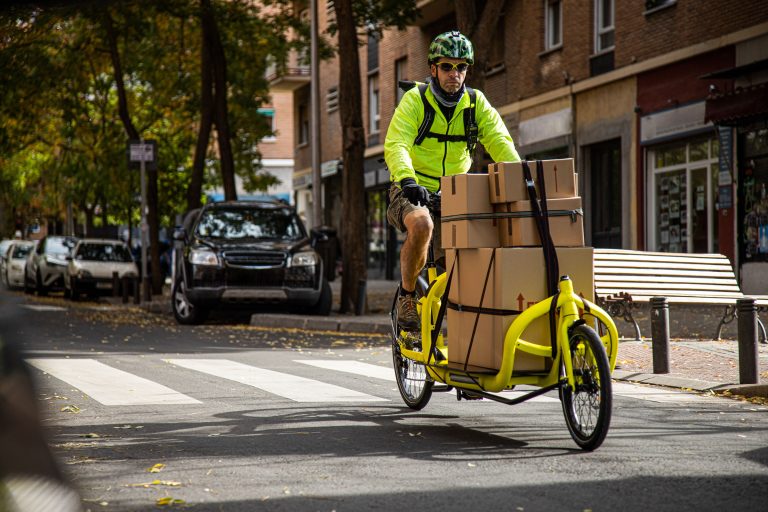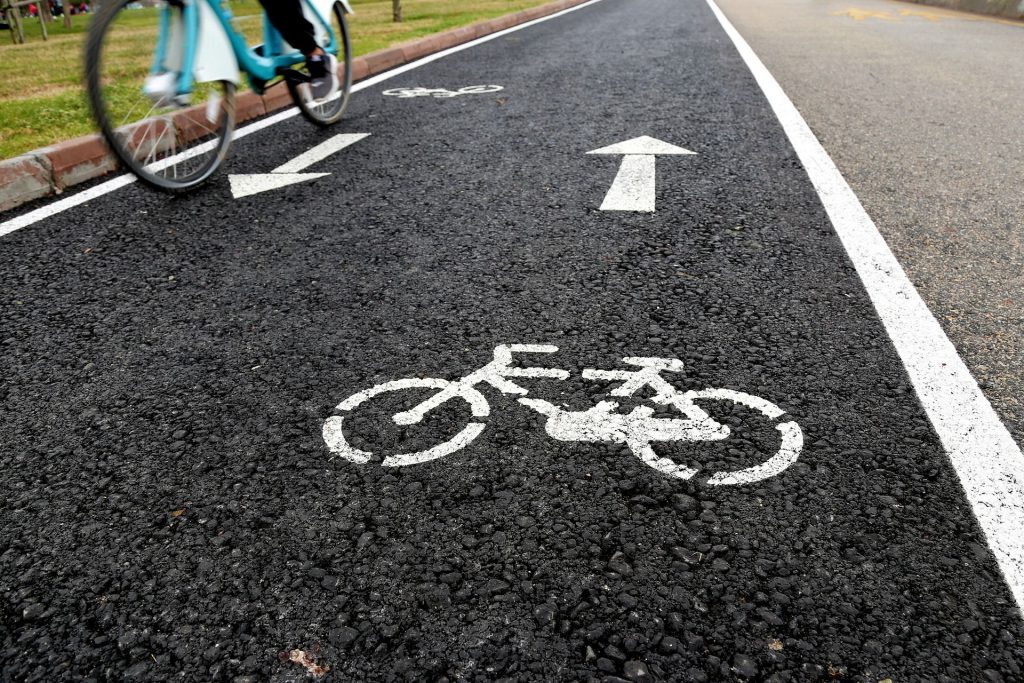
The advantages of the cargo bike model
In addition to industries with a high density of customers, food vendors with a delivery service also benefit from the solution. After all, an elaborate organisational system allows cargo bikes to meet the same requirements for special transport conditions as an ordinary delivery vehicle. Quickly perishable products, for example, can be transported in a refrigerated container.
City Logistics: Flexible overview thanks to route optimisation
While cargo bikes promise many advantages compared to the regular method with trucks or vans, the integration of technological systems is imperative for optimal utilisation. Route optimisation systems can meet the special demands of well thought-out planning. With the help of algorithms and filters, they calculate the ideal route for the cargo bikes.
A second challenge that these systems successfully master is to include the electrification or battery power of e-bikes (such as Hermes uses) in route planning. In doing so, they measure the charging time for a depleted battery as well as the maximum distance a cargo bike can cover with a charged battery.
As the only relevant cost points are the wear and tear of the wheels and the personnel, the purpose of route optimisation is fourfold:
• Relieve staff
• Minimise travel times
• Save wheels
• Meeting delivery deadlines

Relieving the burden on couriers through technology
A route optimisation system supports not only logistics but also the employees themselves. It splits the parcels taking into account the delivery and pick-up locations. The courier can also accept new parcels during the journey - the system updates the route immediately. In addition, it provides relief for deliveries to new areas: the route planning includes blocked road sections and new orders in its calculation before informing the driver about the changes.
Another example of technological support for staff is the InkluServ project. This research project was launched by WEK Werkstätten Esslingen-Kirchheim GmbH, the Fraunhofer Institute for Industrial Engineering and gts systems & consulting GmbH. It aims to create an assistance system for the transport of goods that enables severely disabled drivers to deliver independently. To this end, it replaces metric route information with concrete clues. For example, the request "Turn right in 250 metres." becomes "Turn right after the big tower."
Conclusion: Cargo bikes convince as a sustainable method
Delivery services are becoming more popular and parcel delivery companies are increasingly looking for efficient solutions to cope with the rising number of orders. Combined with a route optimisation system, the cargo bike model achieves the corresponding service quality. Last but not least, the switch to e-bikes also means an early adaptation to the increasing requirements of environmental policy. At the same time, the couriers are relieved more and special services such as express delivery are better fulfilled. Therefore, the model is not suitable for rural areas, but all the more so for urban areas with a high population and delivery density. Especially the last part of the delivery route can be served much more efficiently by a cargo or load bike than by standardised trucks and vans. Because the so-called last mile still means a time-consuming walk for many suppliers.
You want to optimise the flexibility of your cargo bikes? The tour optimisation software TransIT from gts makes it possible!
Here you can find our Success Stories .




